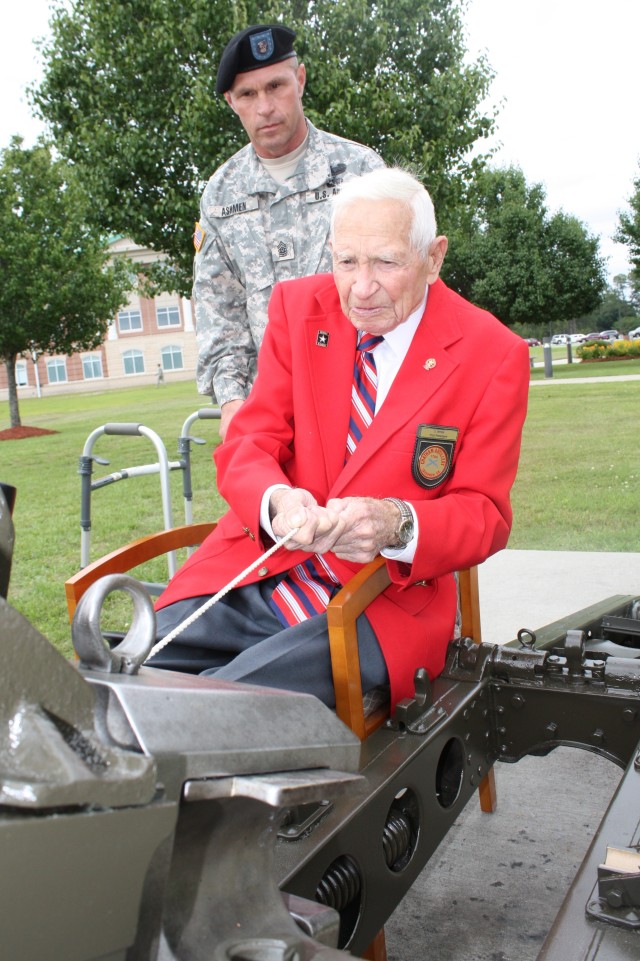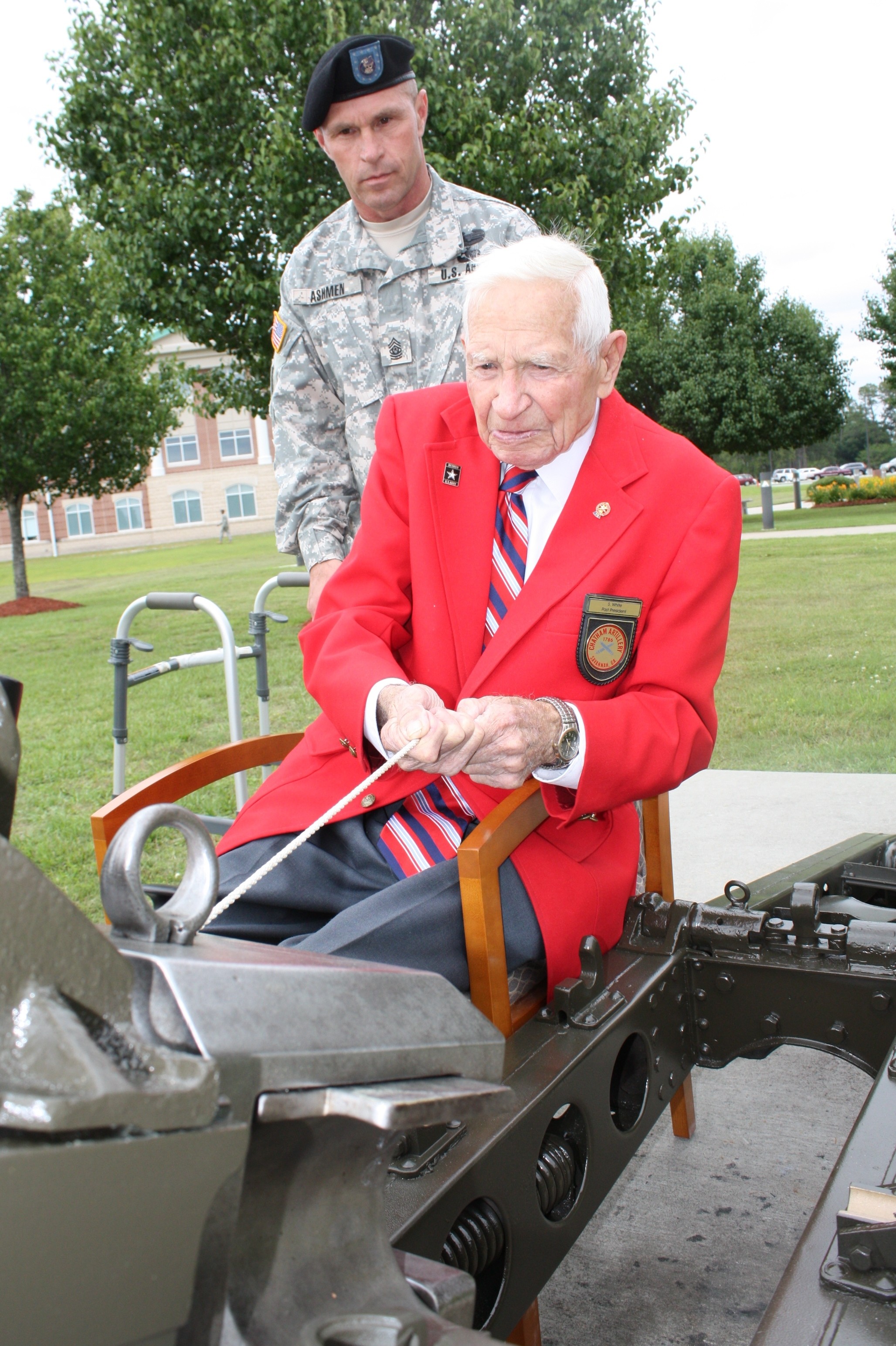FORT STEWART, Ga. - The president and former president of Chatham Artillery Inc. out of Savannah, participated as part of the Flag Detail in Fort Stewart's Retreat Ceremony in front of post headquarters, May 26.
Former president of Chatham Artillery, Stanford "Stamp" White, 92, served as cannoneer of the ceremony while Gordon Smith, current president of Chatham Artillery rendered honors during the playing of "To the Colors," and the lowering of the flag.
The Chatham Artillery team was at Stewart as invited guests of Senior Commander Brig. Gen. Jeffrey E. Phillips and Command Sgt. Maj. Jeffrey S. Ashmen, 3rd Infantry Division command sergeant major-rear, who were also on hand to take part in the ceremony.
According to Smith, Chatham Artillery's participation in the ceremony was an opportunity to commemorate World War II vets. This was done by having White, a former Soldier in the 2nd Battalion, 118th Field Artillery Regiment, 30th Infantry Division, fire the Pack-75 Howitzer to begin the ceremony. A light-weighted howitzer, or cannon, the Pack-75 was used throughout World War II and is now the Garrison salute gun.
While fellow Fort Stewart Soldiers assisted him in the firing of the Pack-75, White and Smith wore the traditional artillery red jackets for the ceremony.
"I just wanted our World War II veterans to be recognized," Smith said about his organization's participation.
White became president of an active-duty unit called Chatham Artillery Inc. after his service in the Army. The organization celebrated their 224th year of service, May 1.
In 1917, a pre-World War I command gave the 1st Infantry Division of Georgia National Guard the ability to reorganize as the 118th Field Artillery Regiment, along with three machine gun units, the 116th, 117th, and the 118th Machine Gun Battalions.
Two years after he was mobilized, the Army triangulated, forming two artillery units instead of one. White subsequently served in the Signal Corps and Army Air Corps. Following the close of the war, he served in the Division Artillery, 48th Brigade, or as Smith called it, "DIVARTY." Stanford then separated from his original comrades.
"Everyone got split up; some were sent to China, some to Burma, Peru... just everywhere," said Smith. "'Stamp' was sent to Iwo Jima where he served as the only Army personnel amongst the other Marines."
Thanks to Command Sgt. Maj. Ashmen and Staff Sgt. Andrew E. Ruff, gun chief, the ceremony was completed without incident and to perfection.
While the Division Color Guard rendered the flag, Command Sgt. Maj. Ashmen and Staff Sgt. Ruff assisted White in firing the cannon. Command Sergeant Major Ashmen first tutored White in pulling the firing cord of the Pack-75 as Col. Stuart J. McRae, division rear detachment commander, looked on. After a few practice tugs from the veteran, Command Sgt. Maj. Ashmen thanked White for his service to the United States.
Bystanders were given ear plugs as White was seated in a chair next to the Pack-75 while awaiting the signal to fire from Staff Sgt. Ruff. Followed by a few clicks into the song "To the Color," Staff Sgt. Ruff gave the order to fire. The Pack-75's blast echoed across the grounds of Division headquarters with a plume of smoke that piled into the air from the cannon's muzzle.
Bystanders turned and faced the American flag at attention or with their hands over their hearts while the flag was lowered.
"Was it like you remembered'" Brig. Gen. Phillips asked White.
"No," White replied.
The commemoration was then concluded as Command Sgt. Maj. Ashmen presented White with a canister, identical to the one which had been fired from the howitzer.
"On behalf of Fort Stewart-Hunter Army Airfield, home of the 3rd Infantry Division, I would like to present you with this canister in gratitude of your service," he said as he handed the canister to White.


Social Sharing